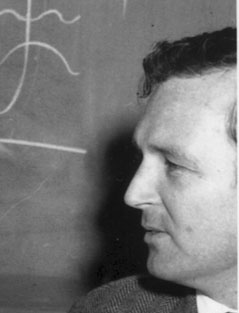William Harlan
Year: October 2nd, 2003
Location: Birmingham, Alabama
Interviewed by: Blackburn, Henry
Abstract
Dr. Harlan, head of the Division of Epidemiology and Clinical Applications (DECA) at NHLBI during the 1980s, gives a broad and useful assessment of epidemiology at NIH.
After his medical training Dr. Harlan worked on the Thousand Aviators Study in Pensacola in the mid fifties. His interest in lipid biochemistry led him to Duke and to Michigan, but Dr. Harlan returned to CVD epidemiology in the 1980s, becoming head of DECA. He discusses the changing status of population-based studies and interventions at NHLBI and NIH, study design at the National Cancer and Eye Institutes, prevention studies’ budgets, the changing status of connections between dietary fat, obesity and CVD, the Women’s Health Initiative, prevention studies in the developing world, and the future of population research at NHLBI. (Suzanne Fisher)
Quotes
I suppose the first, most critical thing to me was learning that the prediction of subsequent blood pressures after 1940, and this was with or without a 20-year follow-up, was strongly dependent upon obesity[…]. I remember so distinctly when I presented that at the American Heart Association meeting because after I left Pensacola I then went to Duke and was a resident in internal medicine and I presented that at the American Heart and I was sort of roundly denounced because that was ridiculous that weight would have any influence on blood pressure. The prevailing opinion was that it was all kidney. And we knew that renal vascular disease accounts for most of the hypertension, and clearly these people couldn’t have renal vascular disease as a result of obesity. So the whole thing was specious.
To think that we could go into four communities or six communities or whatever and make some kind of comparison was probably off the wall wrong. It implies that we have the same kind of isolation of the causal factors that you get in the usual randomized control trial where everything is the same except the randomized allocation and that, of course, wasn’t so. And there was no way of sort of offsetting differences in communities.
… in the early days at NIH… there was a strong orientation toward what is the etiology of disease, what is the etiology of coronary artery disease? The information that came out about etiology wasn’t coming from the cath lab; it was from the wet labs and was coming from places like Framingham. It was coming from lipid laboratories that measured HDL and LDL and made fractionations and measured other things. And so that and the way in which prevention research was counted was initially as etiologic research. But no one ever wanted to think of it that way. And I think it has evolved over time that if you’re interested in etiologic research you have to take a broader look at populations and you have to if you’re interested in intervening on these things you must also use large populations. You can’t simply use people who come into the hospital. Part of that, of course, is people aren’t coming into the hospital anymore and they don’t stay for study anymore. They come in and they get what has to be done and they are out of there, often not even admitted. But I think that early on there was some cloud around etiologic research. It was true that every time you went to deal with a population or wanted to do something in a large group you had to fight tenaciously.
Full Transcript Access
Full transcripts of interviews may be made available to those engaged with original materials for scholarly studies by contacting us.
